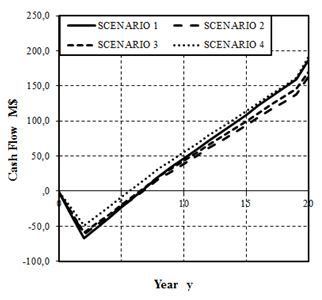Different cases for energy saving have been studied by GASP. One of the recent ones relates to an economic analysis and a comparison between different process solutions for the production of hydrogen and the co-production of hydrogen and energy by means of a zero emission biomass integrated supercritical water gasification (SCWG) and combined cycle power plant.

The case study will be located in Malaysia. Energy will be produced in agreement with the Small Renewable Energy Power Plant (SREP) Program, promoted by the Government of Malaysia. Hydrogen is obtained by supercritical water gasification (SCWG) of Empty Fruit Bunches (EFB), a technology of interest for the processing of biomass with high moisture content. The economic analysis has been carried out to demonstrate the feasibility of the process solutions and to compare their convenience. The feedstock is 35 Mg h-1 of Empty Fruit Bunches (EFB), a biomass obtained in the Palm Oil Industry. The location of the site is Teluk Intak District in the State of Perak (Malaysia). The study has been performed with Aspen Plus® V7.2. The aim of this work has been to investigate the economic convenience of supercritical water gasification technology applied to a potential industrial case study in order to state the possibilities and the trade-off for the production of hydrogen and the co-production of hydrogen and energy from biomass, using an innovative technology (SCWG) instead of a typical unit for syngas and energy production. The processes have been developed to reach zero emissions and zero wastes. CO2 and solid residuals are recycled inside palm oil lifecycle.

Cash flow results, considering Malaysia tax exemptions and a straight-line depreciation.
Back to Research.